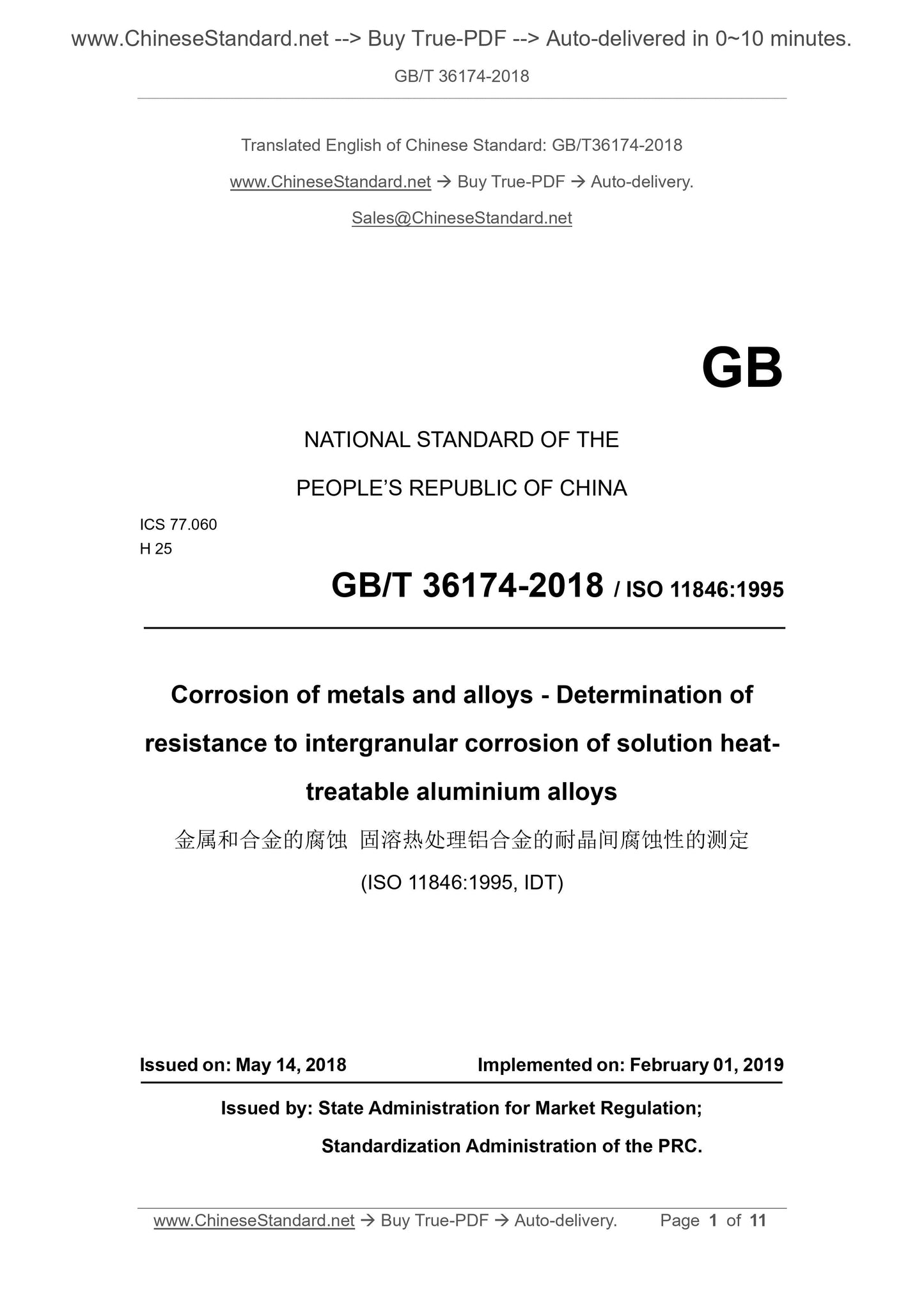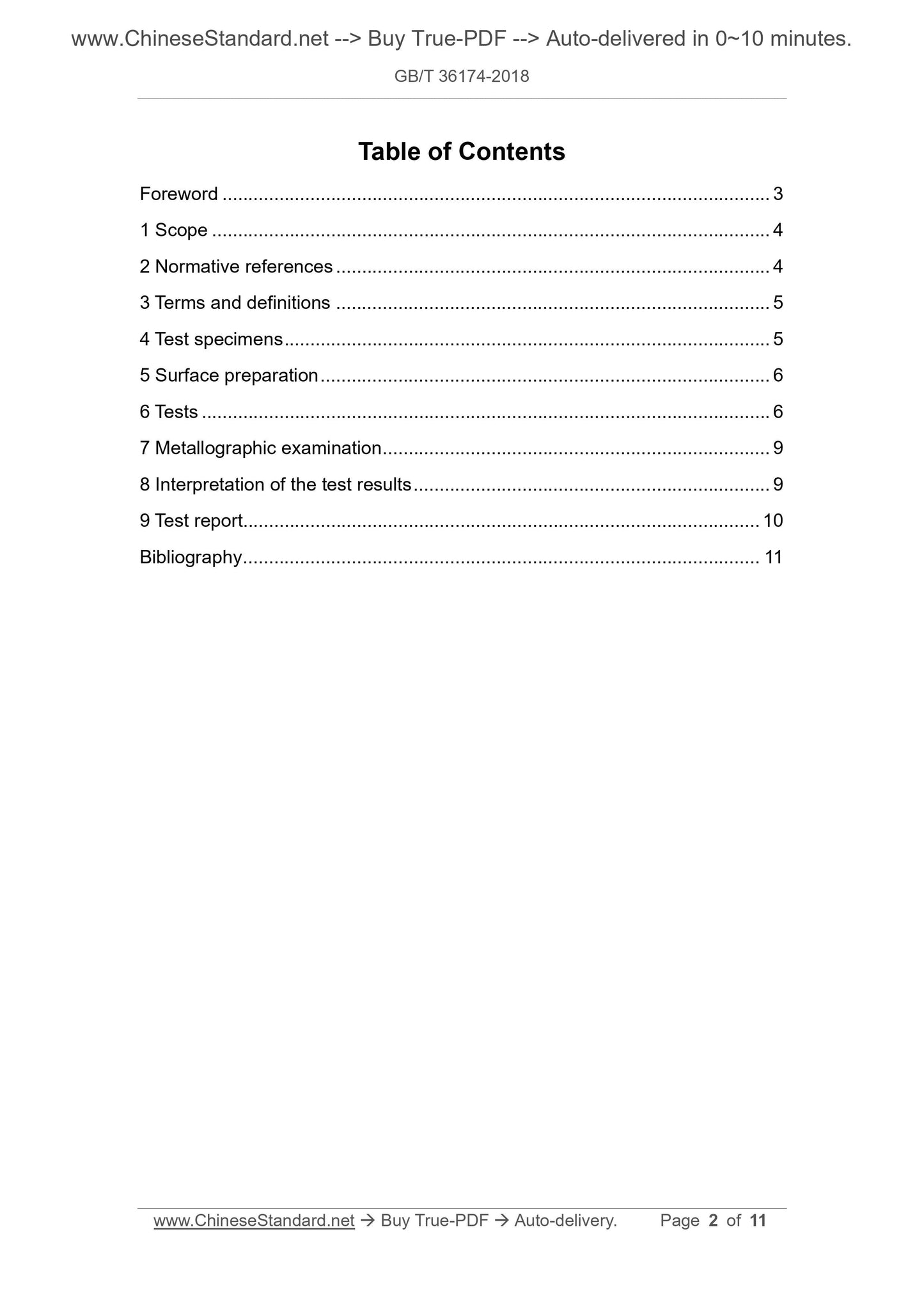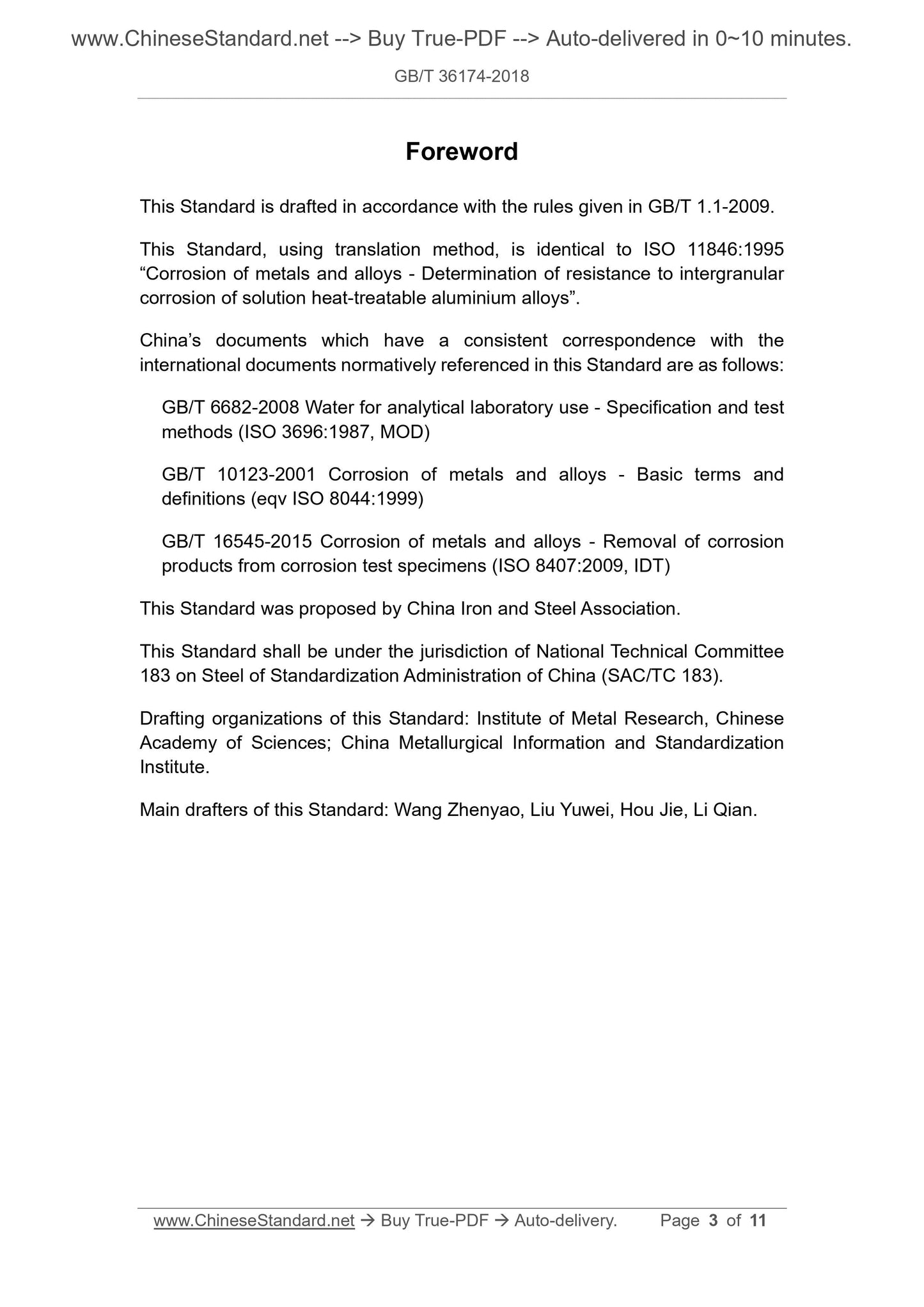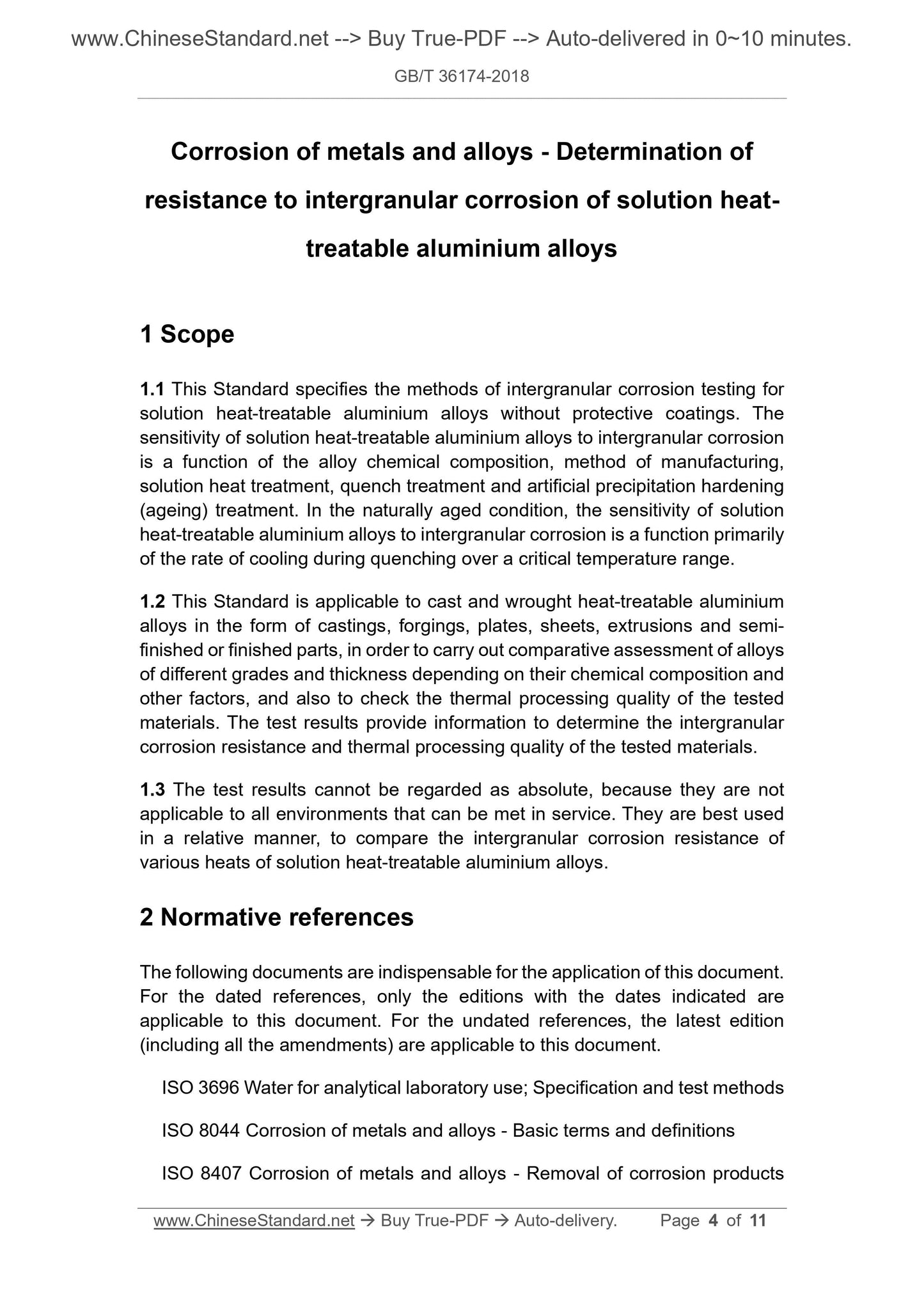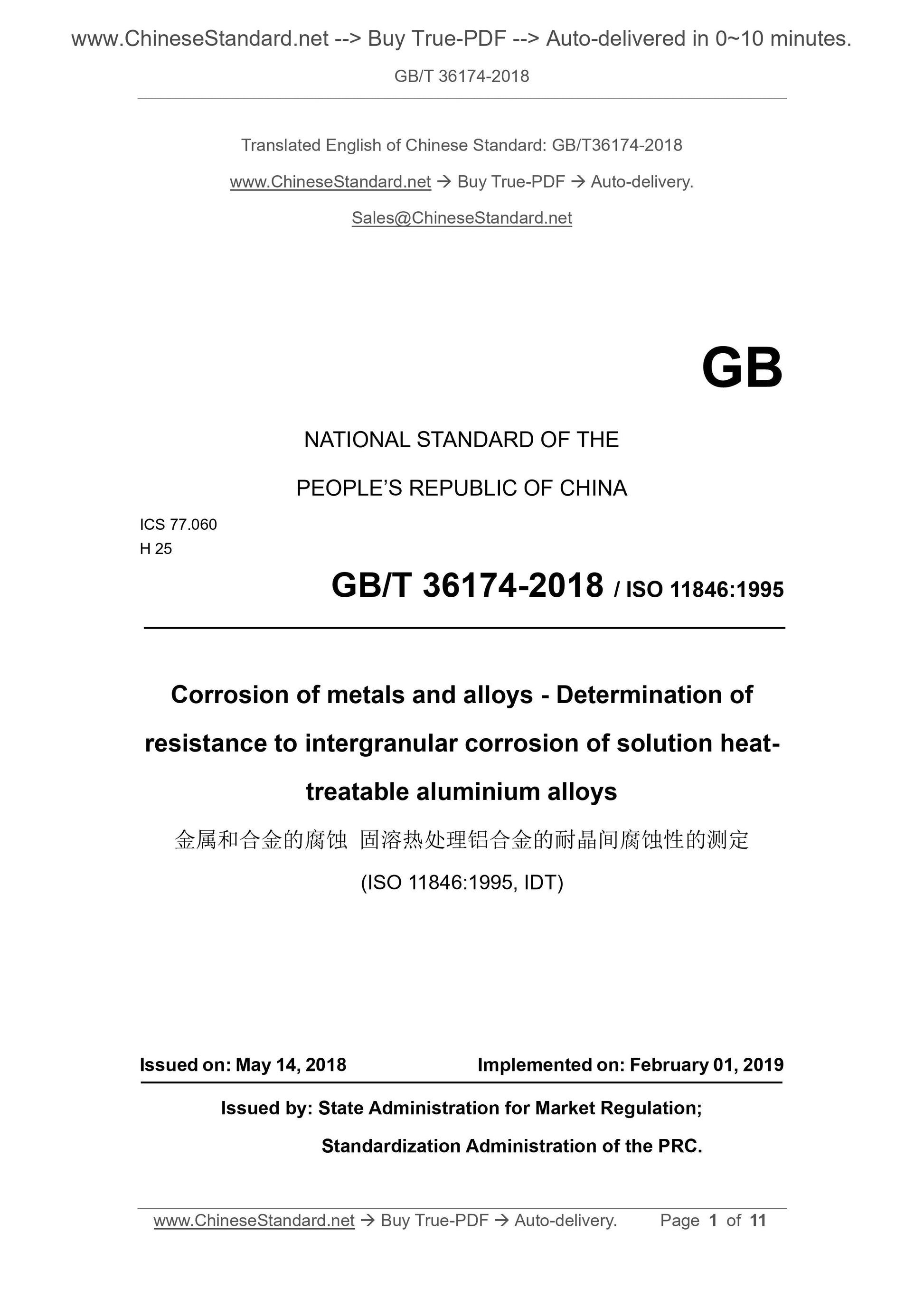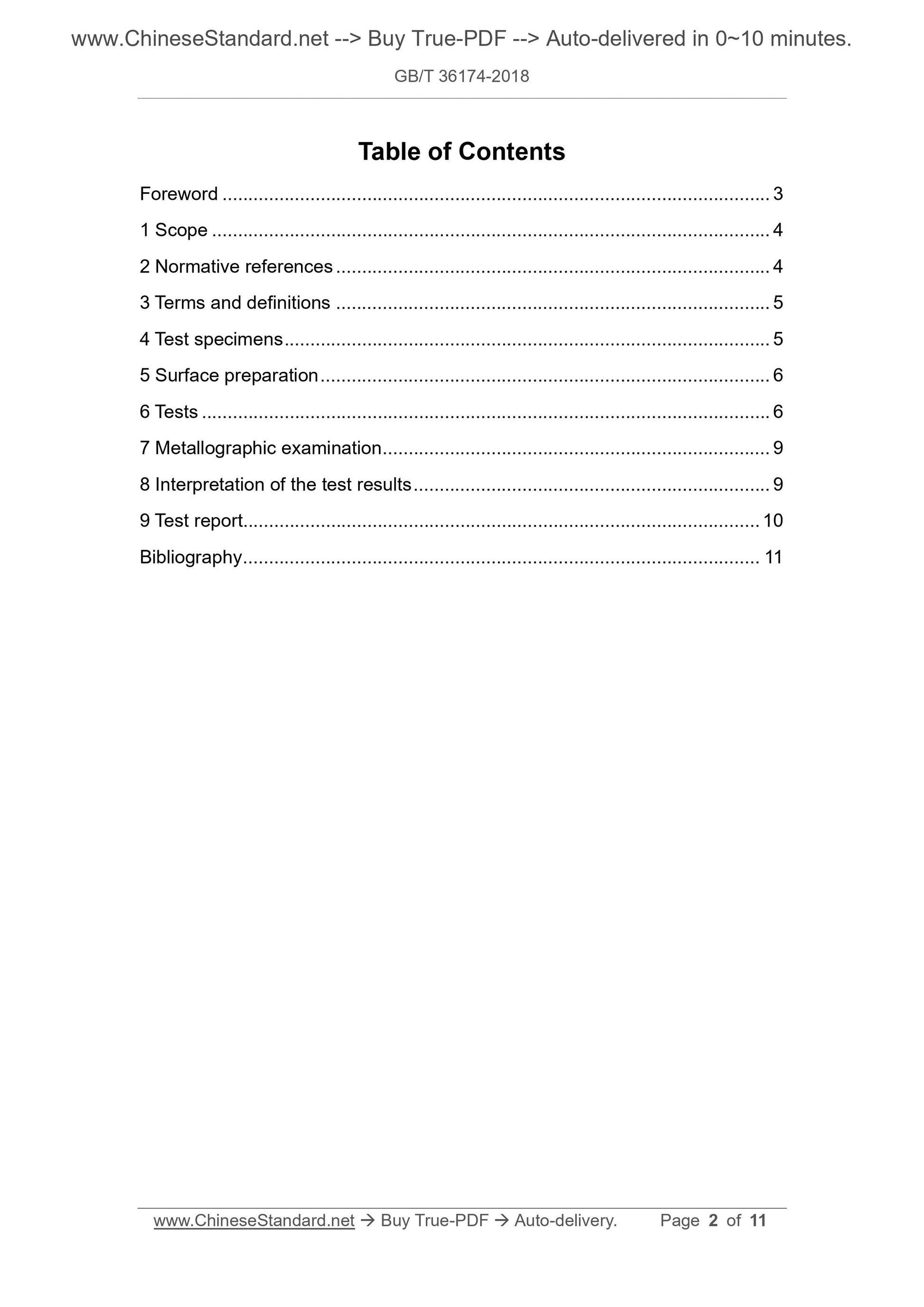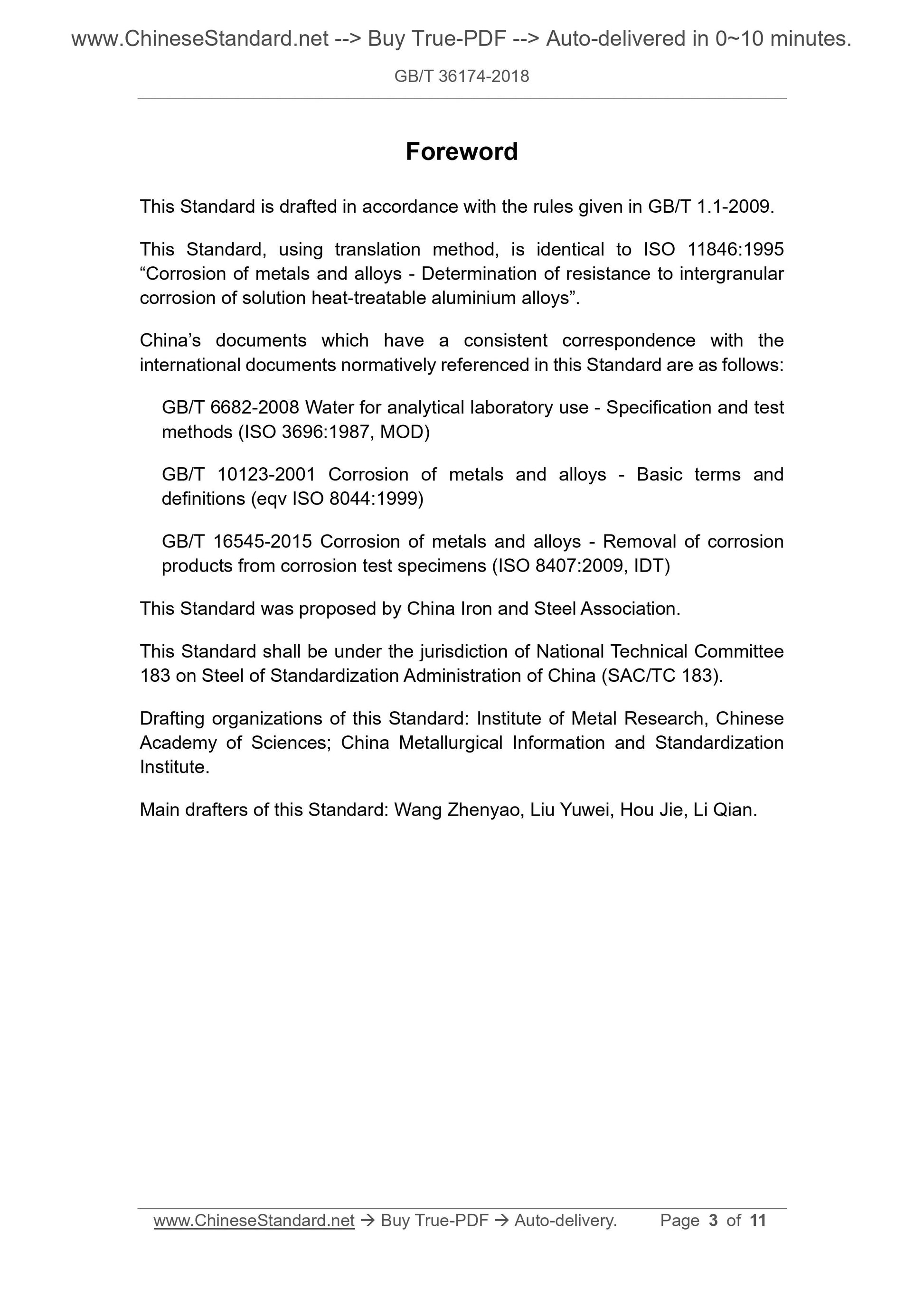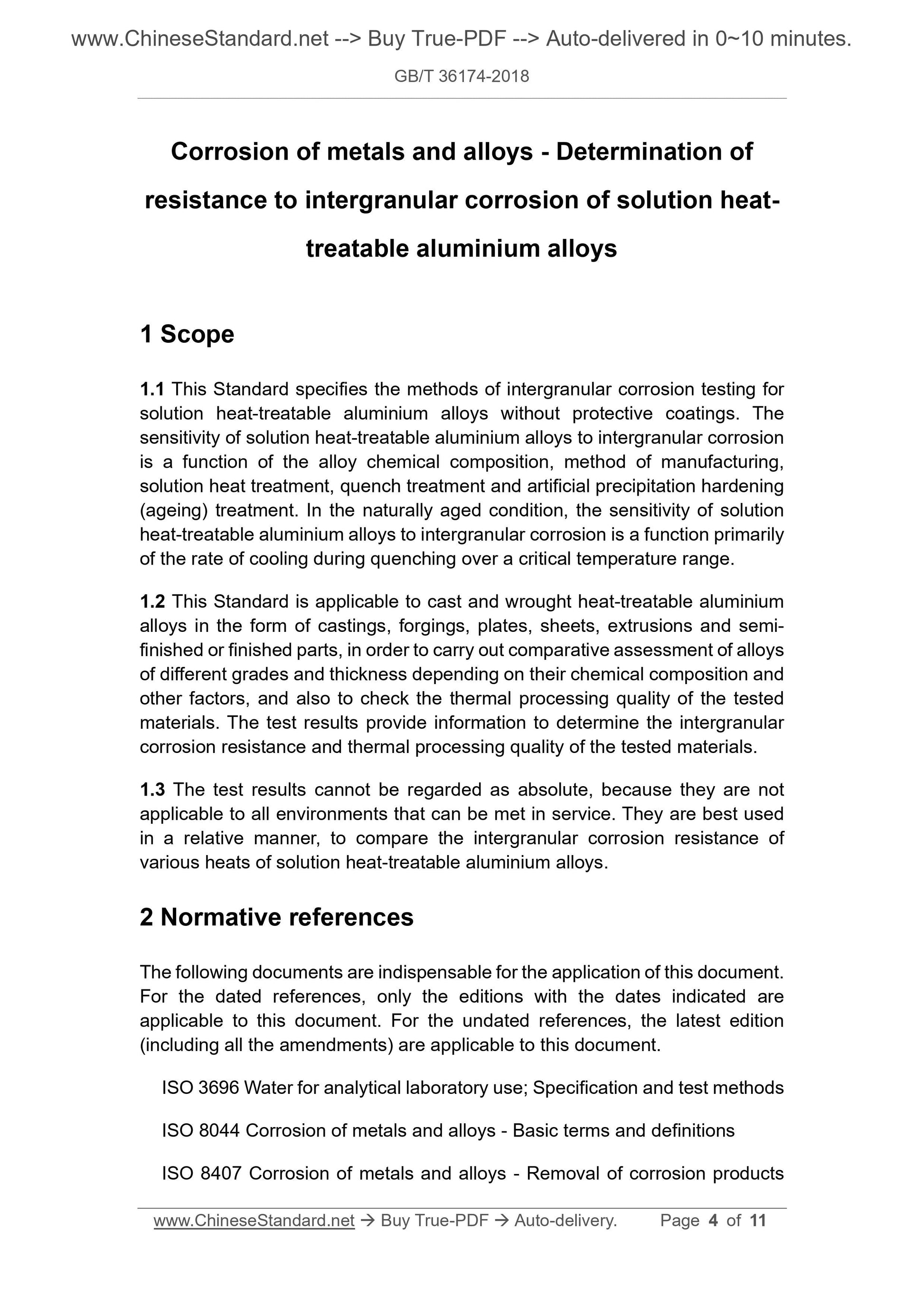1
/
of
4
www.ChineseStandard.us -- Field Test Asia Pte. Ltd.
GB/T 36174-2018 English PDF (GB/T36174-2018)
GB/T 36174-2018 English PDF (GB/T36174-2018)
Regular price
$90.00
Regular price
Sale price
$90.00
Unit price
/
per
Shipping calculated at checkout.
Couldn't load pickup availability
GB/T 36174-2018: Corrosion of metals and alloys -- Determination of resistance to intergranular corrosion of solution heat-treatable aluminium alloys
Delivery: 9 seconds. Download (and Email) true-PDF + Invoice.Get Quotation: Click GB/T 36174-2018 (Self-service in 1-minute)
Newer / historical versions: GB/T 36174-2018
Preview True-PDF
Scope
1.1 This standard specifies the test method for the resistance to intergranular corrosion of solid solution heat treated aluminum alloy without protective layer. Solution heat treatment aluminum alloy pairThe sensitivity of intergranular corrosion is related to the chemical composition of the alloy, the production method, the solution heat treatment, the quenching treatment and the precipitation hardening (aging) process.
The function of change. Under natural aging conditions, the sensitivity of intergranular corrosion of solid solution heat treated aluminum alloy is mainly quenched in the critical temperature range.
A function of the cooling rate in the process.
1.2 This standard applies to cast and forged heat treated aluminum alloys for castings, forgings, slabs, sheets, profiles and semi-finished or finished parts. suitable
Used for grade evaluation of alloys of different grades and thicknesses based on different chemical compositions and other factors and quality of heat treatment of materials.
The test results give information on determining the material's resistance to intergranular corrosion and heat treatment.
1.3 The test results are not absolute as they do not apply to all service environments. These test results are more suitable for comparing different
The intergranular corrosion resistance of the solution heat treated aluminum alloy at the heat treatment temperature.
Basic Data
| Standard ID | GB/T 36174-2018 (GB/T36174-2018) |
| Description (Translated English) | Corrosion of metals and alloys -- Determination of resistance to intergranular corrosion of solution heat-treatable aluminium alloys |
| Sector / Industry | National Standard (Recommended) |
| Classification of Chinese Standard | H25 |
| Classification of International Standard | 77.060 |
| Word Count Estimation | 7,713 |
| Date of Issue | 2018-05-14 |
| Date of Implementation | 2019-02-01 |
| Regulation (derived from) | National Standards Announcement No. 6 of 2018 |
| Issuing agency(ies) | State Administration for Market Regulation, China National Standardization Administration |
Share
